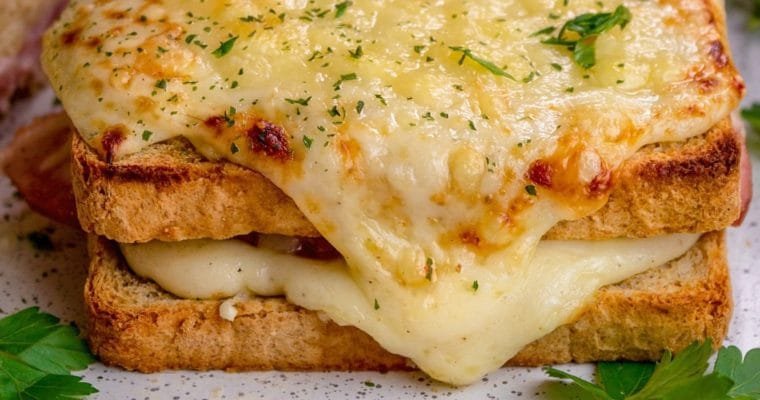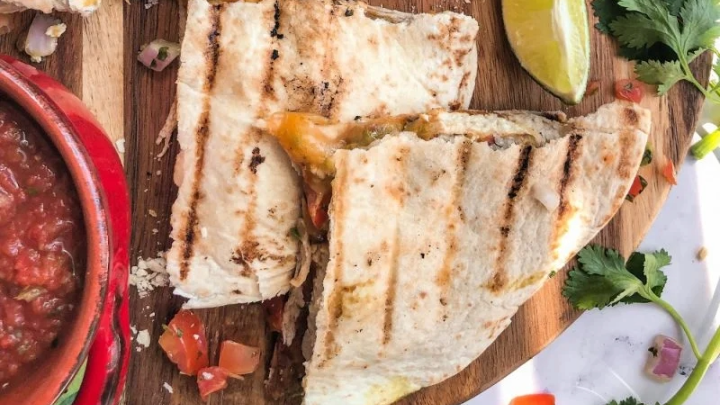Aka SIRNICA

Homemade Cheese Pastry, also known as “Sirnica” in Southeastern Europe, is a beloved delicacy and one of my personal favorites alongside beef burek. Its popularity in the region speaks volumes about its taste and irresistible appeal.
One of the key ingredients of this mouthwatering pastry is the delicate and thin sheets of homemade phyllo dough. Mastering the art of creating these paper-thin layers was a significant achievement for me, and I couldn’t be more thrilled with the results.
After months of practice and experimentation, I have gained the confidence to share my newfound knowledge and techniques with others who are eager to embark on this culinary adventure.
Tap Here for more Pastry Recipes
While I may not consider myself an expert just yet, I have come a long way in perfecting this recipe. It only took the guidance and mentorship of one person to unlock the secrets of creating the perfect Homemade Cheese Pastry.
Now, I am excited to pass on this knowledge and inspire others to try their hand at making this delectable treat.

As I said, after practicing making this pastry a few times a week for months, I have had a mixed experience. Some of my attempts turned out very well, while others were not as successful.
Determined to improve my skills, I started documenting my journey. By noting the type of flour that worked well, the temperature of my house and water during this process, and the size of the sections that needed time to rest.
Type of Flour:
One crucial aspect I discovered while experimenting with bread baking is the importance of choosing the right type of flour. Not all flours are the same and it is really hard to pick them here in the USA because European flours are categorized differently, on a numerical scale: 2, 1, 0, or 00.
This number does not refer to the percentage of gluten or protein in the flour, but rather, to how finely ground it is; 2 being the coarsest and 00 being the finest. In the USA, you have All Purpose and Bread Flour, some bread would add Pastry Flour, as well.
Different recipes call for different types of flour, and using the appropriate one can greatly impact the outcome of any pastry. Through my documentation, I noted which type of flour worked well for this dough recipe.
Temperature Control:
Another factor that significantly influenced my pastry journey was the temperature of my house and the water during the baking process.
I realized that maintaining a consistent temperature throughout the various stages, making was crucial. Also, room temperature of my house and the temperature of the water I used, I could better understand how these variables affected the processes. This information allowed me to make adjustments to ensure optimal dough perfection.

Make sure to have a white, clean tablecloth or bedsheet so you can spread it over the dining room table. Why white? Well, because you can see if there is anything on it. you want to keep it clean, oh, and not wrinkly.
I used olive oil, although I think any oil would do. That being said, you can knead the dough with your hands. I did it and turned out wonderful, but the next day my arms were limp (insert laughter and cry emoji). It felt like I was lifting weight.
If you have a stand mixer with a hook attachment, USE IT! You will thank me later.
Tasty Filo Dough Recipes
Now that we have this out of the way, let me begin. I made a little video demo just so you can get an idea of what I am talking about but I will try my best to write it as detailed as possible.
Just to say, when you make this dough you can fill it with whatever and I mean whatever you want, sweet or savory. Be patient!
If the first one doesn’t work, the next one will, but after you try my way you will make it for sure if you have the right flour.

What will you need:
- Stand Mixer, if possible!
- Large alum pans, rectangular. I got two from Dollar General. This is to rest your dough. I only use it for this purpose. Not necessary but I find it helpful.
- Parchment Paper.
- Measuring Cup, Scale.
- Large White Table Cloth or inexpensive Bed Sheet.
- Clean Kitchen Towels.
- Baking Pan for baking.
Flour that works well in the USA:
- Organic Flour from Costco.
- FIVE Roses AP Flour; Made from the finest Canadian wheat blends.
- Kroger All Purpose Bleached Enriched Flour
- King Arthurs Pastry Flour
I am truly confident that with a few tips and tricks, anyone can make their own homemade cheese pastry. With some patience and practice, it can be just as delicious as mine!
If you decide to make homemade cheese pastry, please let me know in the comments or share it with me on social media such as Instagram or Facebook; @sandraseasycooking with the same hashtag #sandraseasycooking.
If you are private you can DM me a pic. I would love to see your creations!

Homemade Cheese Pastry
Easy and tasty Cheese Pastry perfect for any meal of the day.
Ingredients
DOUGH:
- 6 1/2 cups all-purpose flour, plus an extra one cup if needed (900-950g)
- 2 teaspoons salt
- 3 1/2 tablespoon olive oil (50 ml), plus extra to oil dough
- 2 1/2 cups warm-to-touch water (600ml to 650ml)
FILLING:
- 1 block feta cheese (sheep milk)
- 3 large eggs, mixed
- 1 tablespoon olive oil
- 1 pinch of baking soda
Instructions
- To warm water add oil and salt, mix well then add slowly to flour. Knead it until the dough is soft and smooth.
- Take it out of the mixer if you are using one and knead, then separate it into 2 or 3 equal balls.
- Use a rolling pin to stretch the dough slightly, then place it in a well-oiled pan or on a parchment paper-lined previously mentioned alum pan. It is easier to take it out if you use parchment paper.
- Allow the dough to rest for at least 30 minutes, covered with a towel, although you can leave it for several hours.
- Place a clean cotton tablecloth or bedsheet on the latest table you have and lightly dust it with flour.
- Preheat the oven to 450 degrees Fahrenheit.
- Oil your hands, then take one dough at a time that was resting, and stretch it a bit in your hands before placing it in the middle of the flour-dusted cotton sheet (cloth). By pulling on the ends, stretch the dough until it reaches a thin sheet.
- Mix feta and egg mixture, then add filling about 3 to 4 inches before the edges, on both sides. Drizzle a bit of oil, then as shown in the video, roll lightly. On both sides. Cut in the middle, then cut each one in the middle so that you will have 4 pastries. Don't make them tight. If you see a bubble let it be there. I made 8 larger Twirls because I wanted bigger ones, but you can make smaller ones too.
- The pastry should be placed on a baking sheet and brushed with water and oil mixture; add sesame seeds if you wish. Bake in a PREHEATED oven for 18 to 20 minutes at a high temperature. This depends on your oven.
- After it has finished baking, brush it with a bit more oil and water.
- Let it cool down under a kitchen towel for 10 minutes before cutting and enjoying.
Nutrition Information
Yield
6Serving Size
1Amount Per ServingCalories 404Total Fat 26gSaturated Fat 7gTrans Fat 0gUnsaturated Fat 17gCholesterol 97mgSodium 955mgCarbohydrates 36gFiber 1gSugar 0gProtein 7g
This data was provided and calculated by Nutritionix. Nutrition information isn’t always accurate, but we try our best.




1 thought on “Homemade Cheese Pastry”